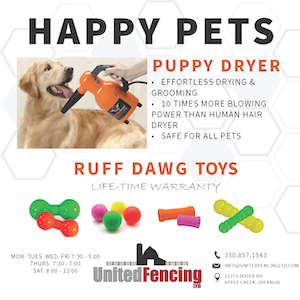Rather than the old-school handsoff theory, research now supports that limited handling of newborn puppies significantly accelerates their nervoussystem development. It also shows that these puppies become better problem solvers, more self-confident in competitive situations with other dogs, and more attracted to people.
Transitional Period
Major dramatic changes occur during the third and fourth weeks of age, called the transitional period. During this time, the puppy’s eyelids and ear canals open and the puppy now experiences many sounds and light variations.
At first, the puppy’s vision is blurry because the optic nerve (the carrier of signals from the eyes to the brain) does not become fully developed until the fourth week of age. By the end of the transitional period puppies can stand, walk, and waddle together as a pack with littermates; play biting and socialization has begun. Earning a dog’s trust starts in the transitional period.
Early Socialization
“Faster than a speeding bullet” best describes a puppy’s sensory and motor abilities during the early socialization period, which occurs between the third and fourteenth weeks. Behaviors expand accordingly during this period. Puppies learn to run, as well as communicate vocally and with body postures. They gain control over their limbs, bowels, and bladders; they also begin to leave the crate/den to eliminate.
Your puppy will also begin to show more interest in littermates than mom. Playing is critical in a puppy’s development and during this period they learn bite inhibition with littermates, as well as chasing, stalking, and wrestling, how to say, “I’m sorry,” and what does not offend others.












